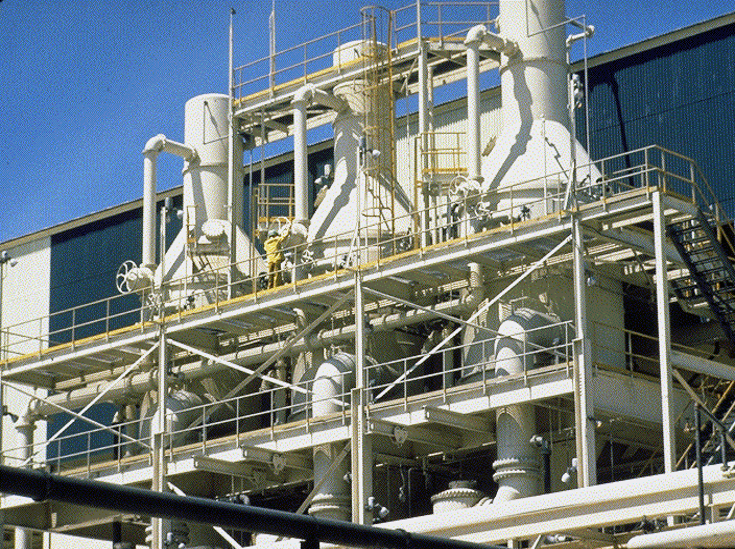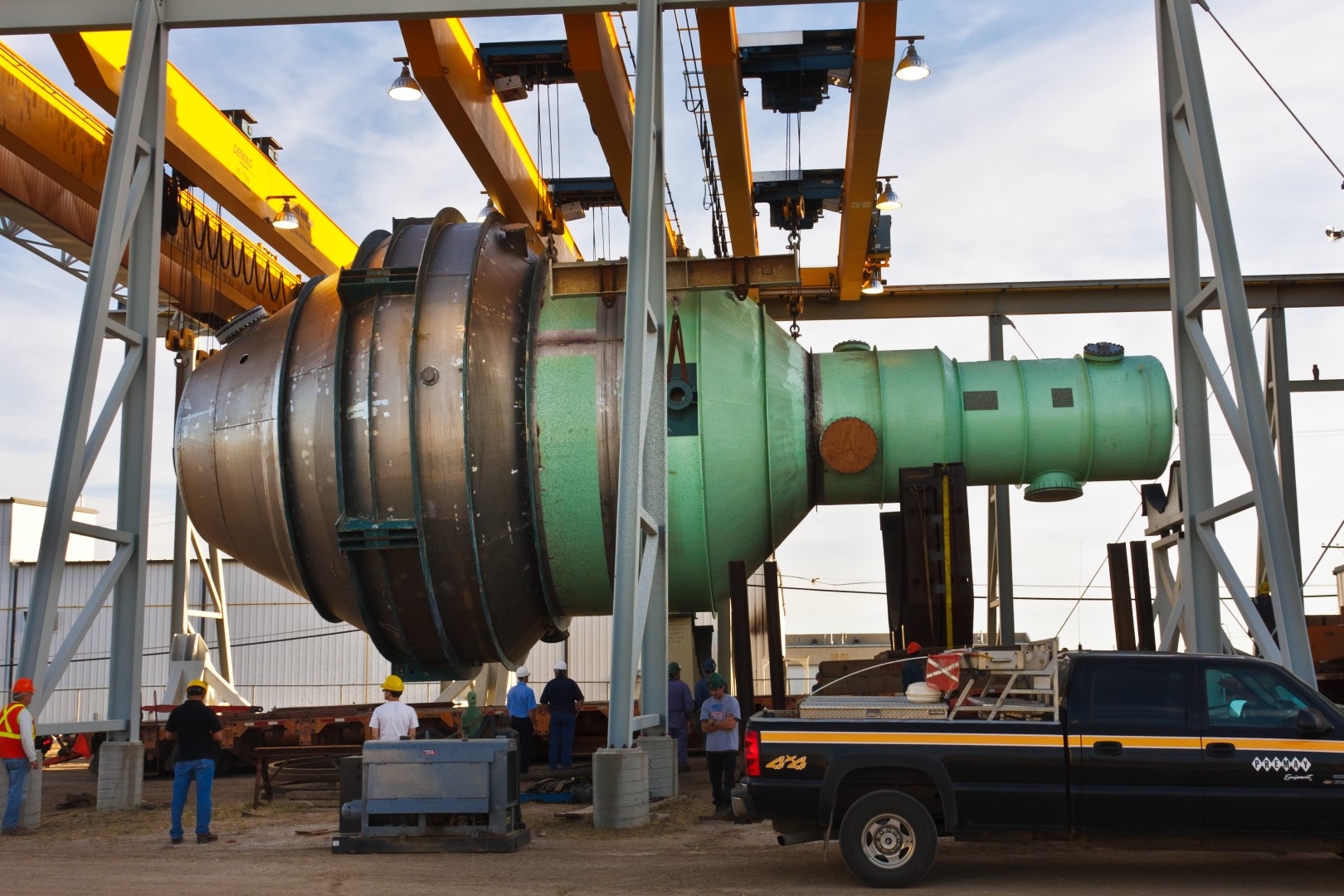Quality Definitions & Specs
The global battery supply chain requires lithium that meets strict purity standards, yet much of the lithium produced initially only meets technical-grade standards. To reach the high-value markets for electric vehicles and energy storage, producers must transform this material into battery-grade lithium carbonate or hydroxide. That transition is neither automatic nor trivial — it hinges on advanced crystallization systems, rigorous QA and analytics, and well-planned rework strategies for any batches that fall short.
The ultimate goal is to deliver high-purity lithium carbonate (Li₂CO₃) or lithium hydroxide monohydrate (LiOH·H₂O). This requires crystallization processes engineered to control the formation and growth of crystals in a manner that maximizes lithium recovery while rejecting impurities. Swenson Technology, working through Whiting Equipment Canada, has decades of experience in designing crystallization technologies that produce valuable, high-purity products.
Impurities & Limits
Impurities are the central challenge when upgrading lithium. Brines, hard-rock concentrates, or even clay-based sources all carry unique impurity profiles. Magnesium, calcium, boron, and sodium are just a few of the elements that can compromise battery performance if not reduced below strict thresholds.
Crystallizers serve as the primary tools for separating these unwanted elements. By tightly controlling supersaturation and crystal growth, they allow impurities to remain in the liquid phase (the mother liquor) while the lithium compounds crystallize in purer form. Each source stream requires a custom approach, and modeling and simulation are crucial to understanding the chemistry and thermodynamics before a flowsheet is finalized.

Analytics & Monitoring
To consistently hit battery-grade specifications, refiners rely on structured analytics and monitoring. This begins with bench testing in the laboratory, where glassware experiments generate crystal data on yield, purity, and morphology. Such tests provide the first insights into whether a process design can achieve the necessary separation.
The next step is pilot testing, where forced-circulation or falling-film evaporators and crystallizers are used at an intermediate scale to generate data under near-commercial conditions. Pilot programs deliver information not just on yield and purity, but also on washing requirements, centrifuge performance, and fouling or scaling tendencies that could affect long-term reliability.
Inline monitoring is also becoming increasingly important. While not always specified explicitly for lithium, Whiting and its affiliates deploy sophisticated PLC and SCADA-based systems across other metallurgical and chemical applications. These platforms provide phase status monitoring, alarm diagnostics, trend analysis, and detailed process reporting — capabilities that directly translate into robust quality assurance frameworks for lithium plants.
Rework Strategies
Even with rigorous design and analytics, some batches will fall short of full battery-grade specifications. Adequate facilities anticipate this by including rework strategies in their flowsheets.
One approach is to recycle off-spec product back into the crystallization train, allowing impurities to be further rejected in subsequent passes. Another method is selective dissolution and recrystallization, which targets specific contaminants. The overall objective is to minimize waste, recover as much high-purity product as possible, and reduce operating costs.
The advanced crystallization technology developed by Swenson is engineered to improve efficiency and reliability. By designing systems tailored to each feedstock’s impurity profile, they minimize the frequency of rework and maximize first-pass yield. Still, when rework is required, robust equipment and flexible control strategies ensure it can be done safely and cost-effectively.
Documentation & Release
Battery-grade lithium is not released to the market on assumptions; it must be validated. The structured design process provides the data foundation for this validation.
- Bench testing delivers proof of concept and generates early physical data on yield, purity, and morphology.
- Pilot testing expands on this, producing data on fouling and scaling tendencies, washing requirements, and centrifuge performance.
- Modeling and simulation document the thermodynamics and chemical behavior of the system, ensuring the design can meet both process and economic viability.
Together, these steps form a comprehensive documentation package that supports not only internal QA release criteria but also external audits and regulatory compliance.

Common Failure Modes
When refining processes fail to meet battery-grade quality, the causes are often predictable. Common failure modes include:
- Incomplete impurity rejection, often due to insufficient control of crystallization parameters.
- Poor solid-liquid separation, leading to contamination of the product with residual brine or mother liquor.
- Inadequate washing, allowing trace contaminants to adhere to the crystal surface.
- Scaling or fouling, which disrupts heat transfer and destabilizes process conditions.
Addressing these risks requires careful design, predictive modeling, and a willingness to adapt the process based on the results of pilot testing.
Sampling Plans
Reliable QA also depends on thoughtful sampling strategies. Early bench and pilot testing inherently function as sampling exercises, generating data that determines whether the system can achieve the required purity. In full-scale operations, structured sampling plans must be embedded in production:
- Regular composite samples taken from crystallizer discharge and mother liquor streams.
- Inline sensors for monitoring critical parameters such as conductivity, pH, and density.
- Statistical process control methods to detect drift before it produces off-spec product.
By integrating these practices, producers maintain confidence that each batch released truly qualifies as battery-grade.
Conclusion
Moving lithium from technical-grade to battery-grade is ultimately a story of discipline: precise crystallization, aggressive impurity removal, continuous monitoring, and a willingness to rework off-spec product when necessary. Each element of QA — from sampling and inline analytics to documentation and release criteria — helps ensure that only material meeting the highest standards reaches the market.
Ready to strengthen your QA for lithium refining? Whiting Equipment Canada, in collaboration with Swenson Technology, designs crystallization systems tailored to meet the most stringent battery-grade standards. Our team can help you integrate analytics, streamline rework strategies, and deliver consistent high-purity output. Let’s talk.











